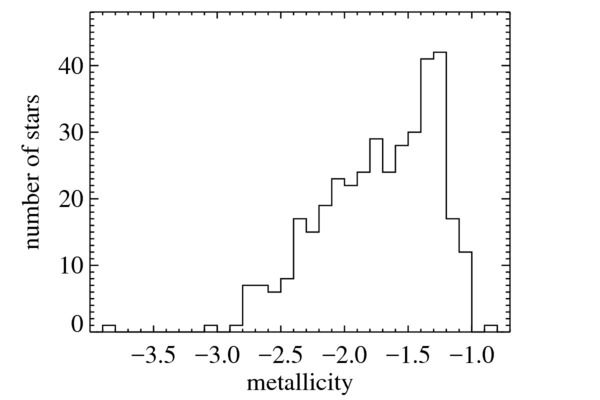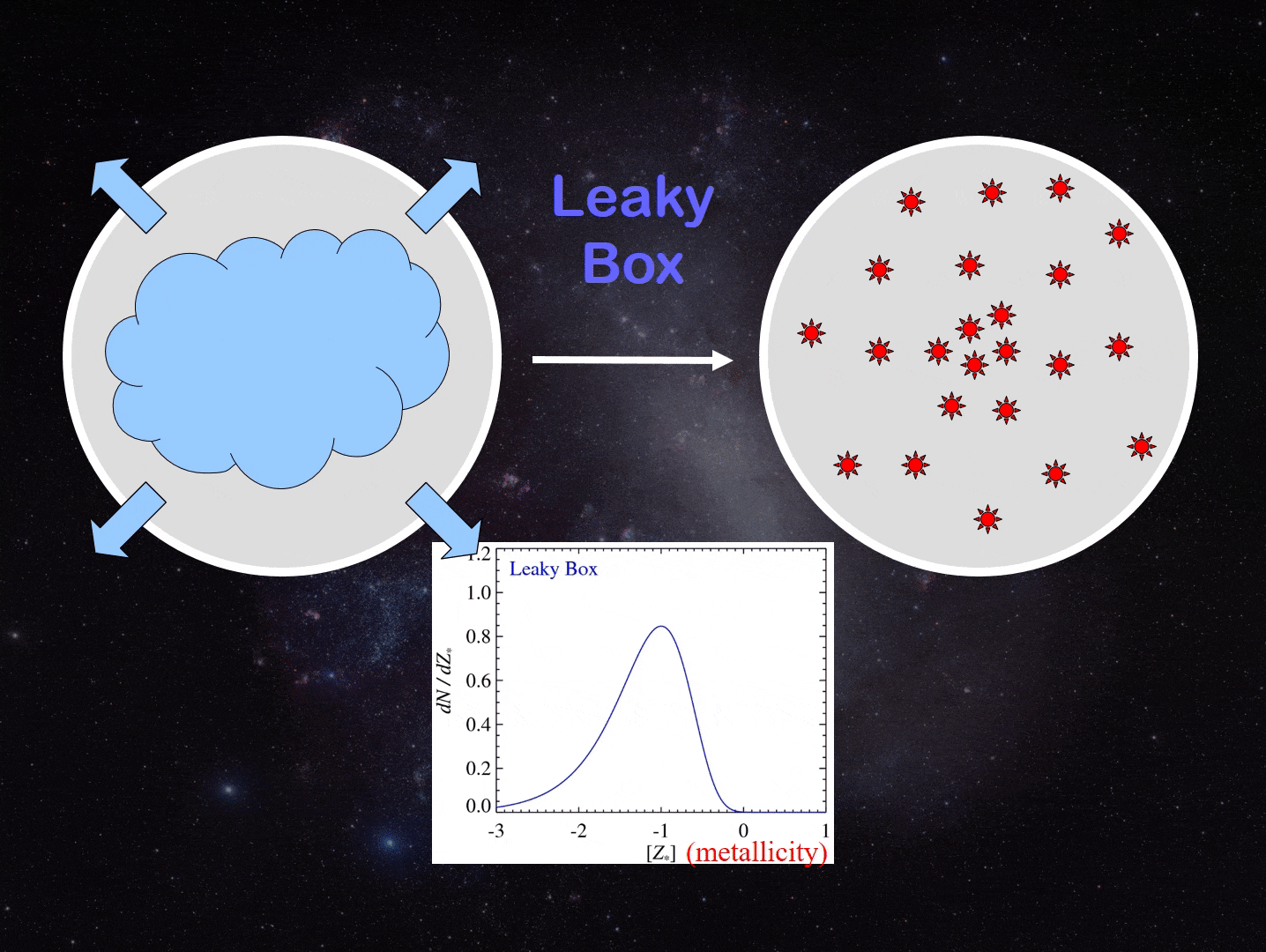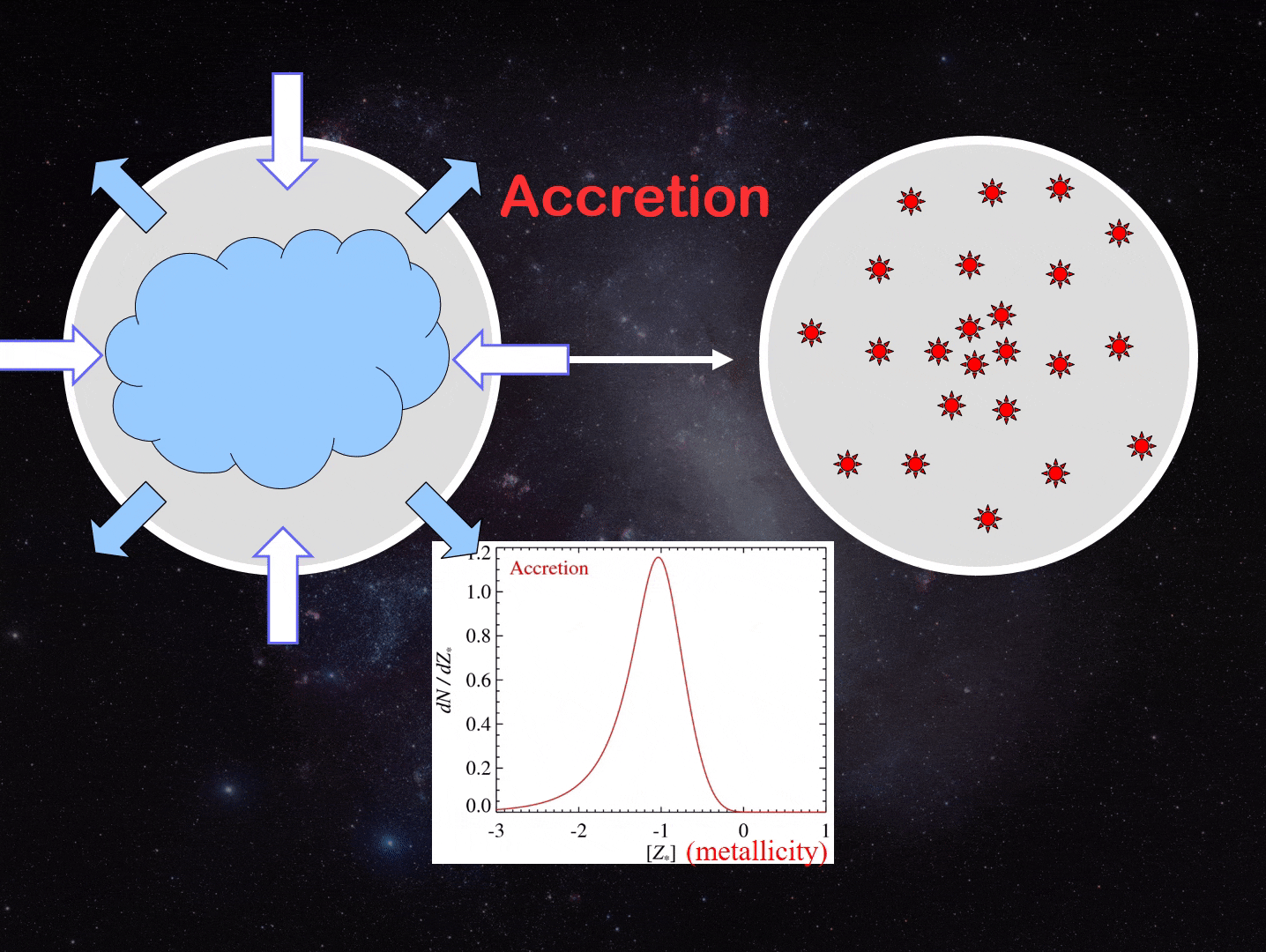Chemical Evolution
Some galaxies are passive. In other words, boring. Most of the Milky Way’s satellite galaxies are just agglomerations of stars that aren’t doing much. All of the action happened billions of years ago, when those stars formed. At that time, turbulent clouds of gas were collapsing and expanding, and some of those clouds kept collapsing until they became individual stars. All of that gas is gone today, and only the stars are left.
Metallicity distribution functions
Remarkably, we can tell a lot about what the gas was doing billions of years ago simply by the number of stars at each metallicity. (A star’s “metallicity” was defined on the Galactic Archeology page as the ratio of the amount of metals—those elements heavier than helium—to the amount of hydrogen.) The key diagnostic is the metallicity distribution function, or MDF. An MDF plots the number of stars at each metallicity. Here is an example of an MDF in the dwarf galaxy called Sculptor:

Models of galactic chemical evolution
We can interpret these MDFs with simple models of galactic chemical evolution. These models posit that a galaxy starts off as a ball of gas. That gas can do one of two things: (1) turn into stars or (2) escape the galaxy. The simplest chemical evolution model is called the Closed Box model. The galaxy is assumed to start as a ball of gas, and all of that gas turns into stars. No gas ever escapes the galaxy. Under these strict assumptions, there is only one possible outcome for the MDF. The following animation demonstrates the Closed Box model and shows the shape of its MDF.

We can add a little bit of complexity to the Closed Box model. In addition to allowing the gas to form stars, it can also escape the galaxy. The following animation demonstrates this Leaky Box model.

The shape of the MDF looks pretty much the same as in the Closed Box model. However, it appears shifted to the left. You can tell from this shift that the stars in the Leaky Box model have less metallicity on average than stars in the Closed Box model. The Leaky Box model also has something that the Closed Box model does not: an independent variable. In other words, it has a knob you can turn. The knob controls the amount of gas that flows out of the galaxy rather than turning into stars. The more you allow gas to leave the galaxy, the more the MDF shifts to the left. This outflow variable is called the effective yield.
Let’s add one more bit of complexity. In addition to allowing gas to escape the galaxy, now let’s also allow external gas to flow into the galaxy. The following animation demonstrates this Accretion model.

The gas that escapes has already been enriched by supernovae inside the galaxy. As a result, escaping gas carries away metals, which causes the stars to end up more metal-poor.
However, the inflowing gas has no metals. It might seem that the metal-free gas would cause the stars to be even more metal-poor. Instead, the new gas also inspires more star formation, which leads to more supernovae, which make more metals. Therefore, accretion is a battle of two competing forces: (1) the new, metal-free gas pushes the stars’ metallicity lower and (2) the newly inspired star formation and supernovae push the metallicity higher. For this reason, we get a bunch of stars around the same metallicity. As a result, the shape of the Accretion MDF looks tall and narrow compared to the Closed Box or Leaky Box models.
Our group is learning the past history of galaxies by measuring their MDFs. We collect our spectra at some of the best telescopes in the world. We can also quantify the compositions of stars in more a detailed way: We can independently measure the amounts of multiple chemical elements rather than just the one-dimensional "metallicity." The ratio of one element to another element, like Mg/Fe, can reveal more about the galaxy's chemical evolution and nucleosynthesis.